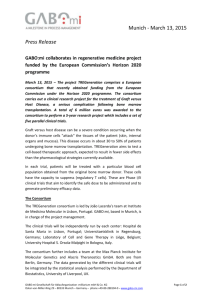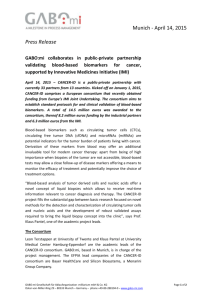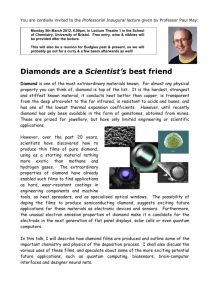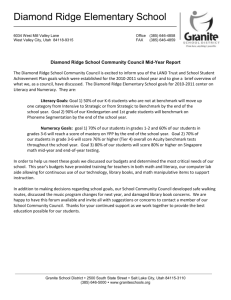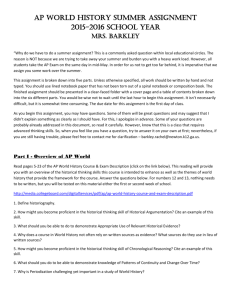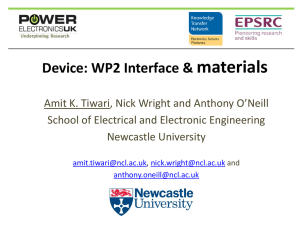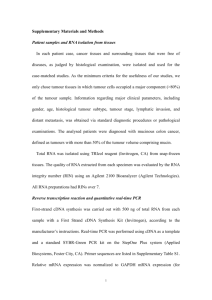Press Release (Word)
advertisement
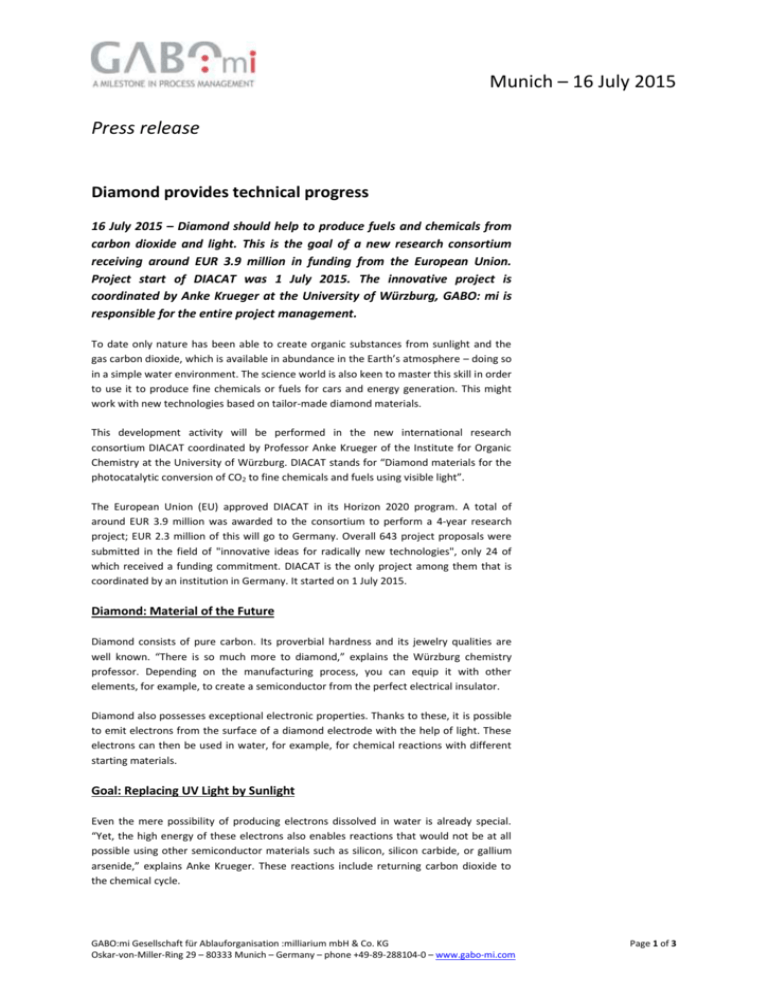
Munich – 16 July 2015 Press release Diamond provides technical progress 16 July 2015 – Diamond should help to produce fuels and chemicals from carbon dioxide and light. This is the goal of a new research consortium receiving around EUR 3.9 million in funding from the European Union. Project start of DIACAT was 1 July 2015. The innovative project is coordinated by Anke Krueger at the University of Würzburg, GABO: mi is responsible for the entire project management. To date only nature has been able to create organic substances from sunlight and the gas carbon dioxide, which is available in abundance in the Earth’s atmosphere – doing so in a simple water environment. The science world is also keen to master this skill in order to use it to produce fine chemicals or fuels for cars and energy generation. This might work with new technologies based on tailor-made diamond materials. This development activity will be performed in the new international research consortium DIACAT coordinated by Professor Anke Krueger of the Institute for Organic Chemistry at the University of Würzburg. DIACAT stands for “Diamond materials for the photocatalytic conversion of CO2 to fine chemicals and fuels using visible light”. The European Union (EU) approved DIACAT in its Horizon 2020 program. A total of around EUR 3.9 million was awarded to the consortium to perform a 4‐year research project; EUR 2.3 million of this will go to Germany. Overall 643 project proposals were submitted in the field of "innovative ideas for radically new technologies", only 24 of which received a funding commitment. DIACAT is the only project among them that is coordinated by an institution in Germany. It started on 1 July 2015. Diamond: Material of the Future Diamond consists of pure carbon. Its proverbial hardness and its jewelry qualities are well known. “There is so much more to diamond,” explains the Würzburg chemistry professor. Depending on the manufacturing process, you can equip it with other elements, for example, to create a semiconductor from the perfect electrical insulator. Diamond also possesses exceptional electronic properties. Thanks to these, it is possible to emit electrons from the surface of a diamond electrode with the help of light. These electrons can then be used in water, for example, for chemical reactions with different starting materials. Goal: Replacing UV Light by Sunlight Even the mere possibility of producing electrons dissolved in water is already special. “Yet, the high energy of these electrons also enables reactions that would not be at all possible using other semiconductor materials such as silicon, silicon carbide, or gallium arsenide,” explains Anke Krueger. These reactions include returning carbon dioxide to the chemical cycle. GABO:mi Gesellschaft für Ablauforganisation :milliarium mbH & Co. KG Oskar-von-Miller-Ring 29 – 80333 Munich – Germany – phone +49-89-288104-0 – www.gabo-mi.com Page 1 of 3 Munich – 16 July 2015 Press release So far, however, the procedure has only worked with ultraviolet light. “Our goal now is to be able to use the visible light of the sun instead and in doing so develop a particularly environmentally friendly technology,” says the chemist. “If we are successful, this will make a major contribution to generating fuels and chemicals in a manner that conserves resources and it may propel technological change.” DIACAT: The Institutions involved DIACAT combines the expertise of six universities and research institutes in the field of diamond materials and electrochemistry; GABO:mi, based in Munich, is in charge of the project management. Alongside Anke Krueger’s team at the University of Würzburg, the parties also involved are: Fraunhofer Institute for Applied Solid State Physics in Freiburg (Germany), CEA Saclay (France), Oxford University (UK), the University of Uppsala (Sweden), and the Helmholtz Centre Berlin for Materials and Energy (Germany). The final member of the consortium is the German company Ionic Liquids Technologies GmbH (Heilbronn), a specialist in ionic liquids. It might be possible with the help of diamond to turn carbon dioxide and sunlight into valuable raw materials, such as the gases methane (CH4) and carbon monoxide (CO) or the alcohol methanol. (Image: Anke Krueger) About Horizon 2020 Horizon 2020 is the biggest EU Research and Innovation Programme ever with nearly €80 billion of funding available over 7 years (2014 to 2020). It promises more breakthroughs, discoveries and world‐firsts by taking great ideas from the lab to the market. About GABO:mi GABO:mi, based in Munich, is a project management company specialised in the management of EU‐funded research projects. Since it was founded in 2005, GABO:mi has continually expanded its extensive expertise with diverse EU funding instruments. GABO:mi has managed 40+ medium‐ and large‐scale collaborative projects funded by the European Commission to date. Our project managers have vast and valuable experience in the management of EU‐ funded projects. They are familiar with the underlying structures of international GABO:mi Gesellschaft für Ablauforganisation :milliarium mbH & Co. KG Oskar-von-Miller-Ring 29 – 80333 Munich – Germany – phone +49-89-288104-0 – www.gabo-mi.com Page 2 of 3 Munich – 16 July 2015 Press release collaborative research projects and their governing principles. Additionally, they are always up‐to‐date with regard to the current regulations of the European Commission and its agencies. Project Logo Press Contact GABO:mi Gesellschaft für Ablauforganisation :milliarium mbH & Co. KG Reka Török Phone: +49-89 288104-27 E-Mail: reka.toeroek@gabo-mi.com www.gabo-mi.com Social Media Twitter https://twitter.com/GABOmi_EU GABO:mi Gesellschaft für Ablauforganisation :milliarium mbH & Co. KG Oskar-von-Miller-Ring 29 – 80333 Munich – Germany – phone +49-89-288104-0 – www.gabo-mi.com Page 3 of 3
